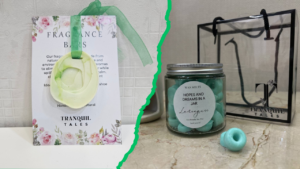Crafting scented candles is not just a hobby; it’s an art form that requires precision, patience, and an intuitive understanding of materials. Among the many types of wax available, soy wax has garnered attention for its eco-friendliness, clean burn, and unique properties. However, working with soy wax is no simple task. Its delicate nature and responsiveness to environmental factors make it both challenging and rewarding for candle makers.
Why Soy Wax?
Soy wax is derived from soybean oil, making it a renewable and biodegradable alternative to paraffin wax. It burns cleaner, producing less soot, and has an excellent scent throw, both hot and cold. These qualities make it a favorite among artisans and consumers alike. Yet, these very traits demand a higher level of skill and attention during the candle-making process.
The Challenges of Soy Wax
One of the most intriguing aspects of soy wax is its sensitivity to weather and environmental conditions. Unlike paraffin wax, soy wax reacts to temperature changes and humidity levels, which can significantly impact the final product.
- Temperature Control
- Melting Point: Soy wax has a relatively low melting point, typically between 120°F and 180°F. Maintaining the correct temperature during the melting and pouring process is crucial. Overheating can degrade the wax, while pouring at the wrong temperature may result in poor adhesion or uneven surfaces.
- Curing Process: Temperature fluctuations during curing can cause frosting—a white, crystalline layer that forms on the surface. While frosting is a natural characteristic of soy wax and doesn’t affect the candle’s performance, many artisans strive for a smooth, aesthetically pleasing finish.
- Humidity Sensitivity
- High humidity can lead to surface imperfections and affect the wax’s ability to bond with fragrance oils. Candle makers often need to adjust their techniques or work in climate-controlled environments to mitigate these issues.
- Fragrance and Color Binding
- Soy wax’s natural properties sometimes make it less forgiving when it comes to absorbing fragrance oils and dyes. Achieving the right balance requires meticulous measurement and testing to ensure the candle’s scent throw and color vibrancy meet expectations.
Mastering the Craft
Creating the perfect soy wax candle involves a blend of science and artistry. Here are a few tips for navigating the challenges:
- Use High-Quality Ingredients: Invest in premium soy wax, fragrance oils, and dyes specifically designed for candle making.
- Monitor Conditions: Keep a thermometer and hygrometer on hand to track temperature and humidity levels in your workspace.
- Test, Test, Test: Small batch testing allows you to experiment with different formulas and techniques without wasting materials.
- Embrace Imperfections: Soy wax’s natural quirks add character to your candles. Educating customers about these unique features can enhance their appreciation for your craft.
The Reward of Craftsmanship
Despite its challenges, working with soy wax offers immense satisfaction. Each candle is a testament to the maker’s skill, adaptability, and passion. The end result is not just a product but an experience—a flickering flame that carries carefully chosen scents and a commitment to sustainability.
As you light your soy wax candle, remember the intricate dance of science and art that brought it to life. Behind its soothing glow lies the story of a craftsperson’s journey, a celebration of nature’s gifts, and the beauty of imperfection.



